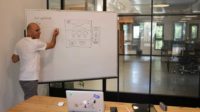Last month, I wrote that No. 8 in my top 10 elements of commissioning is training of future building operators. This month, No. 7 is systems documentation. These are both critical elements that can be combined to enhance the long-term sustainability of a commissioned system’s performance and efficiency. Systems documentation is ahead of training in my list, because if you had to choose between one or the other, systems documentation would be my recommendation.
Systems documentation should be everything a building owner/operator needs to know about the building systems, not just the operations and maintenance (O&M) manuals for individual pieces of equipment. Although O&M manuals are an important part of the systems documentation, they are not a key focus of this column because they are not particularly challenging to collect and compile. Equipment O&M manuals are an industry-standard deliverable for design and construction projects that most installation contractors will produce when requested by the building owner.
Systems documentation is critical, because each building’s systems are unique and designed by different engineers for different purposes in different climates in different architectural enclosures in different code jurisdictions. Even prototype buildings for retail and restaurant chains are different from each other, as those chains need to adapt for each locale and continuously improve over time.
Therefore, it is best to assume new building operators will never have worked with systems exactly like those being turned over to them at the end of a design and construction project. Without systems documentation explaining otherwise, most building operators will look at the hardware and make assumptions about how the systems are intended to work based on whatever past experiences they’ve had with things that appear similar. They will never be 100% correct, and any misunderstandings could be the beginning of the degradation of the commissioned systems’ performance at project closeout.
Systems documentation should include, at a minimum:
- As-built design drawings, including floor plans, system flow diagrams, and system riser diagrams.
- As-built control diagrams, including system schematics, showing all devices and sensor points.
- As-built control points lists and panel wiring diagrams.
- As-programmed sequences of operation.
- Narrative explanation of manual interventions the building operators need to make under certain normal or emergency conditions.
- Narrative explanation of inter-system interfaces not clearly addressed in the as-built control documents.
- Manufacturers’ O&M manuals for the individual piece of equipment (fans, pumps, boiler, chillers, etc.) and controls devices (controllers, dampers, valves, sensors, etc.).
I like to see these organized, to the extent practical, by system, with each system consisting of multiple pieces of equipment. For example, a central heating hot water system could have boilers, pumps, heat exchangers, and the controls for those components to work together to provide hot water to the building.
For new building operators, systems configuration and performance expectations are the most important things to learn at building turnover, and the systems documentation can make that easy by putting everything an operator needs to know about each system in a single place. Most facility operators can figure out how to repair an individual piece of equipment (or when to call in a service contractor), even if it’s finding the manufacturer’s O&M manuals online; however, it’s too much to ask building operators to figure out the system design intent and optimization strategies on their own.
Although both have value, excellent systems documentation is a more valuable commissioning project deliverable than a commissioning report (if a building owner needs to choose between one or the other). It can be compiled by the commissioning professional with input from the design and construction team, as most of the contents are deliverables the project team typically owes the owner anyway. Systems documentation should be organized as a package for use in training at the end of construction, for new building operator onboarding in the future, and as a resource for all operators as they evaluate and troubleshoot the systems day in and day out.





